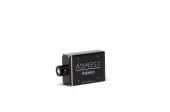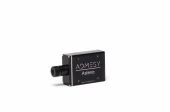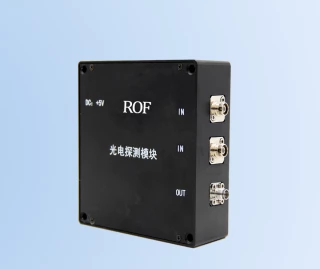Description
The Asteria Light Meter by Admesy is a cutting-edge device engineered for precise luminance, illuminance, and flicker measurement. Designed with the needs of the display and lighting industries in mind, the Asteria offers a high-speed luminance measurement function based on the CIE 1931 standard. This functionality ensures that the measurements align with the human eye's perception of light, providing accurate and reliable results.
The Asteria operates seamlessly with both USB and RS232 interfaces, allowing for flexible connectivity options. It boasts a high-speed CPU and substantial internal memory, enabling it to perform complex calculations efficiently. Whether you require a lens system for luminance measurements or a cosine corrector for illuminance and luminous intensity assessments, the Asteria is equipped to meet your needs. Additionally, fiber-connected versions are available for remote sensing and accessory integration, enhancing its versatility in various applications.
One of the standout features of the Asteria Light Meter is its comprehensive support for flicker measurement standards. It accommodates various industry standards, including Contrast min/max, Contrast RMS, JEITA, VESA, Flicker percentage (IES), Flicker index (IES), and IEEE 1789. This wide-ranging compatibility ensures that the device can be utilized across different measurement scenarios, making it an invaluable tool for professionals in the field.
The Asteria is designed to handle both high and low frequencies simultaneously, thanks to its impressive sample rate of 186,567 samples per second and ample memory capacity. This capability allows for detailed and accurate analyses of light behavior, providing insights that are crucial for optimizing display and lighting performance. Furthermore, the device is compatible with Windows, Linux, OSX, and embedded systems, ensuring easy integration into existing workflows.
Asteria High-Speed Light Meter
Specifications
| Material: | Silicon (Si) |
|---|---|
| Spectral Range: | 380 – 780 nm |
| Mounting: | Mounted or Unmounted |
| Filter Response: | CIE 1931 luminosity curve V(λ) |
| Sample Speed: | 186.567 samples per second |
| Supported Flicker Methods: | VESA, JEITA, percentage, index, IEEE 1789 |
Features
- High-Speed Luminance Measurement: The Asteria light meter offers CIE 1931 high speed luminance measurement, ideal for display and lighting industries.
- Multi-Platform Compatibility: Compatible with Windows, Linux, OSX, and embedded systems, ensuring broad usability across different platforms.
- Comprehensive Flicker Measurement: Supports all major flicker measurement standards including Contrast, JEITA, VESA, Flicker percentage (IES), Flicker index (IES), and IEEE 1789.
- Advanced Connectivity: Operates via USB and RS232, with options for fiber-connected versions for remote sensing and accessory connectivity.
- High Sample Rate: Capable of measuring high and low frequencies simultaneously with a high sample rate of 186,567 samples/second.
- SCPI Command Interface: Easy integration into other applications with SCPI command interface support.
- Programming Language Support: Compatible with major programming languages including Labview, Labwindows, Visual Studio (C++, C#, VB), and others supporting VISA.
- USBTMC Standard Compliant: Ensures reliable USB communication with USBTMC compliance.
- Flexible Measurement Modes: Offers integrating and sampling modes with three gain stages for each mode, alongside an auto-range function for enhanced measurement flexibility.
- Human Eye Sensitivity: Measures absolute luminance, illuminance, and luminous intensity according to the human eye's CIE1931 luminosity function.
Applications
- Display Manufacturing & Testing: For luminance, contrast, and flicker measurement in LCD, OLED, and LED displays.
- Lighting Industry: Accurate illuminance and luminous intensity measurements for lamps, fixtures, and LEDs.
- Flicker Analysis: Detailed flicker assessment for compliance with global standards in lighting and display products.
- Research & Development: Ideal for laboratory analysis of optical performance and flicker characteristics.
- Production Quality Control: Fast inline measurements for production testing and calibration workflows.
Frequently Asked Questions
What is the Asteria Light and Flicker Meter used for?
What are the available configurations for the Asteria Light and Flicker Meter?
What are the features of the Asteria Light and Flicker Meter?
What are the specifications of the Asteria Light and Flicker Meter?
What are the dimensions of the Asteria Light and Flicker Meter?
Similar Products
Your inquiry has been received.
Create an account by adding a password
Why create an account?
- Auto-complete inquiry forms
- View and manage all your past messages
- Save products to your favorites
- Close your account anytime — no hassle


